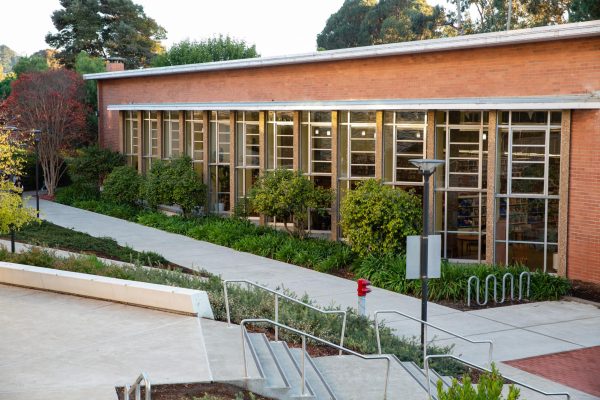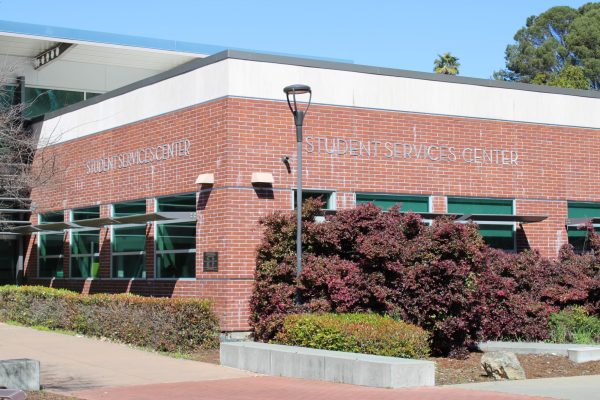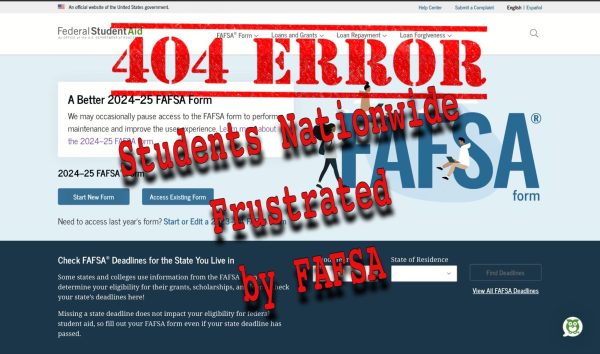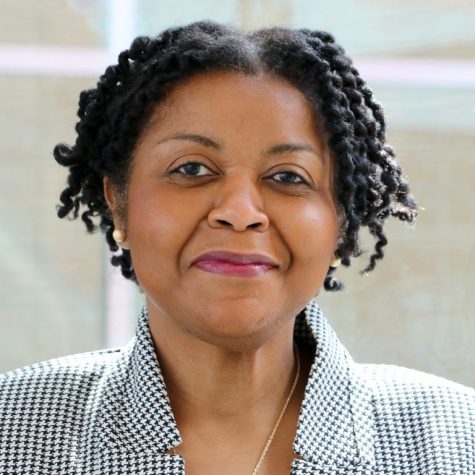DVC’s student fee ledger exceeds $1 million, ASDVC pays employees
ASU Boards at Diablo Valley College, Contra Costa College approve using $5 Student Activity Fee to pay employee’s salaries
May 17, 2017
The student government at Diablo Valley College in Pleasant Hill will break $1 million in its account balance next semester according to the District Account Availability Report as of May 10.
According to the report, the Associated Students of DVC (ASDVC) has a balance of $928,665 in Student Activity Fee (SAF) funds.
The ASDVC has spent $465,251 since the $5 districtwide enrollment fee, its main source of income according to the reports, began being charged to students in 2012.
District Chief Financial Officer Jonah Nicholas said students are charged the $5 fee at the start of fall and spring semester upon registering for classes.
Nicholas said the district deposits the student fees collected at DVC, Contra Costa College and Los Medanos College (in Pittsburg) into their student governments’ accounts annually. He said these funds are meant to be used by associated student unions to fund club events, scholarships or any student-led community projects.
According to the approved 2017-18 ASDVC Operating Budget, it generated $200,000 in SAF funds, $2,000 in vendor fees and $18,000 from its sticker program during its 2016-17 fiscal year.
ASDVC Student Life Coordinator Todd Farr said the $5 fee at DVC covers mostly the same student activity expenses as those at the two other colleges in the district.
But, unlike its sister student governments, Farr said DVC’s 19,000 semesterly student headcount generates more money by way of the $5 SAF than the ASDVC Board is able to spend in one semester.
“We have a backup fund for everything,” he said. “ But we’ve collected so much money we are almost at $1 million. And the district has shown concern because we are not spending enough money.”
Farr said excess funds from student fees, including the $5 SAF, go into the ASDVC’s reserve account.
According to the ASDVC’s most recent WestAmerica Bank Account Statement, provided by Farr, its main reserve account contains $881,000 in student fees.
He said reserve funds could be used in the case of “unforeseen emergencies.”
Farr said because these are public funds, “the college does not have direct access to this money.”
He said expenditures of student fees could only be used for programs or activities that benefit a large number of students on campus. Any expense from this account must be approved by a majority vote of the ASDVC Board.
Farr has only been the Student Life manager for one year, but to meet the request of the district, he said, the ASDVC Board has agreed to allocate $381,935 to pay full-time and part-time college employees over the last two years.
In 2017-18, the ASDVC allocated $210,458 from its ASDVC reserve account, and another $171,477 in 2016-17, for employee salaries.
The 2017-18 allocation pays about 62 percent of the salaries of four Student Life department employees.
Funding frenzy
Farr said this is the ASDVC Board’s largest expenditure from the SAF reserve account, which is also reviewed by the internal Budget Oversight Committee (BOC).
According to the 2017-18 Funding and Workload Model, which breaks down the percentage of each employee’s salary that comes from the ASDVC, the ASDVC Board approved to pay about 20 percent of Farr’s pay as program manager, 80 percent of the student activities coordinator’s salary, 50 percent of an office assistant’s salary and 80 percent of student services instructional support coordinator’s pay.
The total cost to fund these positions has increased by $38,981 from the first year (2016-17) to the second, according to the DVC Student Life Office Personnel Organizational Restructure Funding Summary.
DVC Vice President of Student Services Newin Orante and Dean of Student Support Services Emily Stone presented the report to the ASDVC Board in 2015 when they first asked for student fees to pay for employees’ salaries, Farr said.
According to the April 17 ASDVC Board meeting minutes, $29,348 was allocated to pay the Student Life program manager, $62,929 for the student activities coordinator’s salary, $31,993 for an office assistant and $86,188 for a student services instructional support coordinator for next year — 2017-18.
“It was actually first approved last May to provide additional staff for the Student Life Center so we could strengthen support for not just ASDVC members, but for everyone on campus,” Farr said.
Farr said anything that is approved must adhere to the ASDVC bylaws and college, district and state policies.
California Community College Chancellor’s Office Student Leadership Dean Margaret Ortega said there is no state law that restricts any ASU Board from approving funds to pay for student workers or full-time employees.
“When it’s an internal agreement, the college and district have their own structure of policies,” Dr. Ortega said.
CCC’s ASU Board also voted to pay a percentage of its Student Life coordinator, a full-time advisory position, for two consecutive years, beginning in 2016-17.
This agreement, between CCC administrators and the ASU Board, does not have any paperwork attached to it despite using $17,656 to pay 25 percent of its adviser’s salary. The ASU Board agreed to cover the cost without putting the decision out to a campuswide vote.
District Governing Board Trustee John Marquez said how the ASU Board and CCC’s college administration handled this allocation of student fees was not an example of democracy in action.
“It should be a campuswide vote,” Marquez said. “The funds should not be used (for employee salaries) unless the majority of students who pay the fees say it’s OK to spend it this way.”
He said any proposal to use student fees, “taxes,” should be submitted to the public.
Marquez said the most recent example of this process is the $450 million Measure E parcel tax. These funds can only be used to build new facilities on campuses districtwide.
“We ask permission of the voters,” he said. “This is a good time for students to learn how to manage money.”
Farr said it is impossible to spend nearly $200,000 on student activities in one year, but how close a student government comes to meeting that goal is determined by the student leadership’s level of involvement.
Democratic cash
Contra Costa College Business Services Supervisor Nick Dimitri said the $5 student fee is the main source of funding for every associated student union in the district.
Dimitri said the spike in revenue generated during the first year of $5 Student Activity Fee spurred concerns.
“And when we saw what we were making we said, ‘Whoa, whoa, whoa, we can’t be doing this. We need to spend this money for students’.”
He said because of LMC’s and CCC’s smaller enrollment sizes compared to DVC, their ASU boards were able to spend enough money on student activities to expend most of its surplus funds.
The first two years after the SAF was passed, the district reports show the ASDVC came nowhere close to spending most of its revenue.
“So (ASDVC) made $221,000 off the Student Activity Fee (in 2012-13), but it only spent $50,000 and some change,” Dimitri said. “So, let’s assume the expenses are not all paid by Student Activity Fee money. Even if that is true, the max expense is still $50,000.”
Farr said he cannot speak for certain about activity prior to his hiring, but student clubs and student governments make the final decision how funds are expended.
“And if there are years when not much was spent, then they probably didn’t know how to spend the money,” Farr said. “It all depends, but it really comes down to changes in leadership.”
But the ASDVC Board is posed with a unique challenge.
“(ASDVC’s) balance goes up dramatically every year,” Dimitri said as he flipped through the annual budget reports.
“First $381,000 (in 2012). $590,000. This is a great business. $776,000. You and I would love this. $880,000. $948,000 — and now they are about to cross $1 million this year.”
According to the state Chancellor’s Office 2016 Term Student Count, DVC has a 38,900 headcount for spring and fall semesters. CCC has 13,144 and Los Medanos College has 17,257.
Summer and winter intersession term headcounts are not included because the $5 fee is not charged.
“Before the Student Activity Fee happened,” Dimitri said, “DVC started with about a quarter of a million dollars. That’s how much they had in the bank basically. Since then it’s gone up to nearly $1 million.
Farr said in order to more effectively use its student funds, the ASDVC Budget Oversight Committee (BOC) asked him to create a budget analysis report based on the last three years of the Inter-Club Council’s budget.
Farr said he also included ASDVC’s expenditures in the budget report, and he presented his findings to the oversight committee.
“(Based on the report), the ASDVC and ICC have not fully expended their funding, and these funds will roll over into the reserve account.
“There’s a lot of money in our reserve account,” Farr said. “And that has happened because student groups have not expended enough to match (the SAF revenue).”
ASDVC President Bowen Liu and BOC Controller Zhexuan Zhang did not respond to multiple interview requests from an Advocate reporter.
“If (ASDVC members) were spending it like they should be then their balance would still be the same as it was (before the $5 fee),” Dimitri said. “They’re still spending and making a little bit of money from (fundraising or donations), but their revenues skyrocketed because they were not spending all the (SAF) money.”
He said because CCC and LMC are much smaller than DVC, their student governments are able to spend money more effectively.
Marquez said how a person perceives wealth affects how money is spent, and DVC has a different population of students compared to CCC or LMC.
“You’ve got to remember that DVC has a huge number of international students,” he said. “When students come from abroad to attend college here, that usually means they come from families with ‘the means’ if you will.
“When someone proposes that they pay a $5 fee, it’s easier for them to just say OK.”
He said most students at LMC or CCC come from middle- to low-income families who have a different point of view how the money should be spent.
“That could be a difference. But when we are talking about Contra Costa (College), I stand with the opinion that how student fees are used should be voted on by the entire student body.”
Public secrecy
CCC business information communication technology professor Randy Watkins said the initial idea fueling the $5 SAF was that student governments needed money to host campus events, student programs and scholarships.
“Whatever they did with the money, it was supposed to go directly to students,” Watkins said. “The (student) fee was a great idea, but no one thought it through.”
He said the district passed a $5 fee and began collecting in the 2012 spring semester.
“It made so much money it quickly became a problem,” Watkins said. “Community colleges districtwide suddenly amassed all this money, but didn’t know how to spend it.”
But unlike how the college is funded by the state, each ASU does not have to return money it did not spend.
According to District Account Availability Reports, the ASDVC Board’s most active year in terms of spending was 2015-16 — three years after the SAF started collecting money.
Farr said this was same year the ASDVC Board approved paying for employee salaries.
“They spent $159,000, but they collected $204,000,” Dimitri said. “Let’s assume all these expenses are related to (student) activity, which I seriously doubt. The difference between the two figures is about $50,000.”
He said that’s 10,000 students who paid the fee and may not have gotten anything out of it, and these students may not have known about the fee in the first place.
“Many people don’t know they are paying $5 each semester, and that is also a big issue,” LMC Student Union President Israel Castro said. “We need to increase awareness about the (SAF). By doing so, students would become aware of the opportunity and take advantage of the (SAF), and truly own it.
“They can have the freedom and assurance to demand things from student government.”
Watkins said student governments districtwide should focus efforts on funding food programs for students who do not have enough money to eat, or implant more book scholarships.
“But I don’t think you would need a $5 fee to achieve that,” he said. “It should be lowered, especially at DVC.”
Marquez said the district cannot tell DVC that it has too much money so it must lower the fees.
“I think this is something they themselves, as a student (governing) body, must look at it and make that determination,” he said. “I wouldn’t go along with a Governing Board motion to tell the ASDVC’s Board to cut back. It’s up to each campus to come to the realization that it doesn’t look good for them to be charging five bucks, amassing this huge amount of revenue and not spending those monies on activities.”












Brian Boyle • Jun 22, 2017 at 2:16 pm
SEE?! I CALLED IT!
ABOLISH THAT LEGAL FEE ALREADY!